York
December 19, 2010
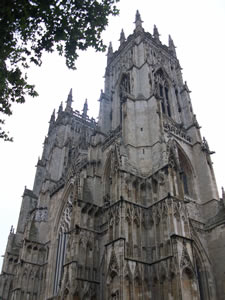 England’s second city between 1100 and 1500, York, has a colorful and rich history, which is utilized to its fullest in the city’s numerous and diverse tourist destinations. “A medieval city constructed on top of a Roman one, it was first built in AD 71, when it became capital of the northern province and was known as Eboracum. It was here that Constantine the Great was made emperor in 306, and reorganized Britain into four provinces. A hundred years later, the Roman army had withdrawn. Eboracum was renamed Eoforwic, under the Saxons, and then became a Christian stronghold. The Danish street names are the reminder that it was a Viking center from 867, and one of Europe’s chief trading bases. England’s second city between 1100 and 1500, York, has a colorful and rich history, which is utilized to its fullest in the city’s numerous and diverse tourist destinations. “A medieval city constructed on top of a Roman one, it was first built in AD 71, when it became capital of the northern province and was known as Eboracum. It was here that Constantine the Great was made emperor in 306, and reorganized Britain into four provinces. A hundred years later, the Roman army had withdrawn. Eboracum was renamed Eoforwic, under the Saxons, and then became a Christian stronghold. The Danish street names are the reminder that it was a Viking center from 867, and one of Europe’s chief trading bases.
History lives in every street of this glorious, walled city on the River Ouse, from the 10th century displays of the Jorvik Viking Centre to the recreated Victorian street in the York Castle Museum. Its rich architectural tapestry mixes the medieval with half-timbered Tudor and elegant Georgian. The glory of York is the Minster, the largest medieval cathedral in northern Europe, whose grandeur and beauty are unsurpassable. The city also boasts 18 medieval churches, and 3 miles length of medieval city wall.
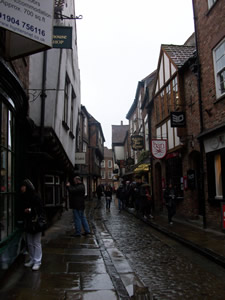
Upon our arrival in York, we set out to explore. Our first stop, the Shambles, the most colorful old street in the half-timbered, traffic-free core of town. “This 100-yard long street, next to the old market, was once the “street of the butchers” (the name is derived from shammell—a butcher’s cutting block). In the 16th century, it was busy with red meat. People lived above—as they did even in Roman times. All the garbage was flushed down the street to a mucky pond at the end. Tourist shops now fill the fine 16th century Tudor buildings.
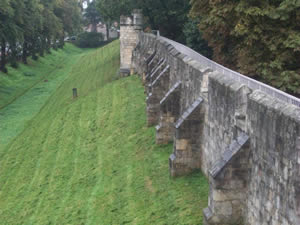 Then on to Monk Bar, one of the York’s finest original medieval gates, situated at the end of Goodramgate. It is vaulted on three floors, and the portcullis still works. In the Middle Ages, the rooms above it were rented out, and it was a prison in the 16th century. Its decorative details include men holding stones ready to drop on intruders. We climbed the stairs to the medieval city walls for wonderful views of the York Minster. Exiting at a point further along the wall, we passed by the York Art Gallery and through the grounds of the Minster back to the pedestrian zone. Taking our time to browse the shops, we made our plans for the next day. Then on to Monk Bar, one of the York’s finest original medieval gates, situated at the end of Goodramgate. It is vaulted on three floors, and the portcullis still works. In the Middle Ages, the rooms above it were rented out, and it was a prison in the 16th century. Its decorative details include men holding stones ready to drop on intruders. We climbed the stairs to the medieval city walls for wonderful views of the York Minster. Exiting at a point further along the wall, we passed by the York Art Gallery and through the grounds of the Minster back to the pedestrian zone. Taking our time to browse the shops, we made our plans for the next day.
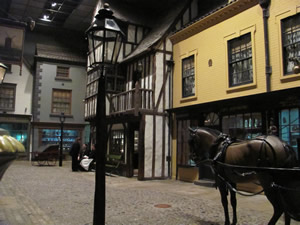
Rising early, we set out to the York Castle Museum, housed in two 18th century prisons. Opened in 1938, its period displays include a Jacobean dining room, a moorland cottage, and a 1950s front room. It also contains an exhibition on the traditions of birth, marriages and death in Britain from 1700 to 2000. The most famous exhibits include the reconstructed Victorian street of Kirkgate, complete with shopfronts, and the Anglo Saxon York Helmet, discovered in 1982.
Next to the Castle Museum stands Clifford’s Tower. The fortress dates from the 13th century. It is sited on top of a mound that William the Conqueror built for his original wooden castle, which was destroyed by fire during anti-Jewish riots in 1190. Clifford’s Tower was built by Henry III, and was named after the de Clifford family, who were constables of the castle.
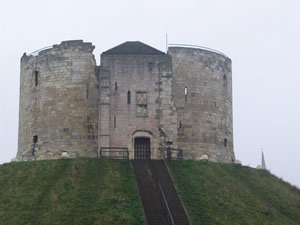
Nearby stands Fairfax House, a Georgian town house built by Viscount Fairfax from 1755 to 1762 for his daughter Anne. “The house was designed by John Carr, and restored in the 1980s. Between 1920 and 1965 it was a cinema and dancehall. Today, visitors can see the bedroom of Anne Fairfax, and a fine collection of 18th century furniture, porcelain and clocks.”
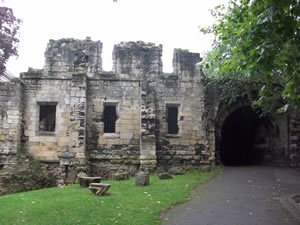
Continuing our stroll through town, we passed by St Mary’s Church, Jorvik, the famous street of Coppergate, the Guildhall, and then headed towards the lush, picnic-perfect grounds of St Mary’s Abbey and the Yorkshire Museum. St Mary’s Abbey was founded in 1086, and this Benedictine abbey was one of the wealthiest in Britain. Its involvement in the wool trade in York and the granting of royal and papal privileges and land led to a relaxing of standards by the early 12th century. The abbot was even allowed to dress in the same style as a bishop, and was raised by the pope to the status of a “mitred abbot”. As a result, 13 monks left in 1132, to found Fountains Abbey. 11th century St Olave’s Church stands next to the gatehouse of St Mary’s Abbey. It was founded by the Earl of Northumbria in memory of St Olaf, King of Norway.
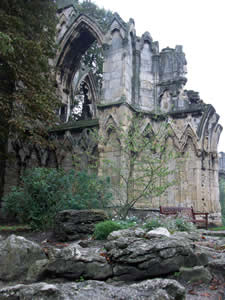 The Yorkshire Museum is “the city’s forgotten, serious ‘archaeology of York’ museum. While the hordes line up at Jorvik, the best Viking artifacts are here—with no crowds and a better historical context. Yorkshire Museum was recently in the news when it purchased the 15th century Middleham Jewel for £2.5 million, one of the finest pieces of English Gothic jewelry found this century. Other exhibits include 2nd century Roman mosaics and an Angle-Saxon silver gilt bowl.” The Yorkshire Museum is “the city’s forgotten, serious ‘archaeology of York’ museum. While the hordes line up at Jorvik, the best Viking artifacts are here—with no crowds and a better historical context. Yorkshire Museum was recently in the news when it purchased the 15th century Middleham Jewel for £2.5 million, one of the finest pieces of English Gothic jewelry found this century. Other exhibits include 2nd century Roman mosaics and an Angle-Saxon silver gilt bowl.”
After enjoying a lunch of pork sandwiches while people-watching in King’s Square, we stopped into the York Minster, the largest Gothic cathedral north of the Alps, “York Minster is 158 m long and 76 m wide across the transepts, and houses the largest collection of medieval stained glass in Britain. The word “minster” usually means a church served by monks, but priests always served at York. The first minster began as a wooden chapel used to baptize King Edwin of Northumbria in 627. There have been several cathedrals on or near the site, including an 11th century Norman structure. The present minster was begun in 1220 and completed 250 years later. In July 1984, the south transept roof was destroyed by fire. Restoration cost £2.25 million. It is also among the grandest cathedrals, with incredible stained-glass windows. Its unusual octagonal Chapter House has a late-15th-century choir screen by William Hyndeley.”
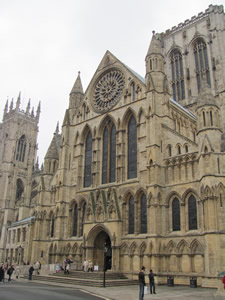
Our final destination of the day was the National Railway Museum. The world’s largest railway museum and the 2001 European Museum of the Year, the museum covers nearly 200 years of history using a variety of visual aids. Though trains and railways are not of much interest to me, except for in needs of transportation research, I enjoyed parading past the historical train cars, particularly Stephenson’s Rocket and Queen Victoria’s lavish royal car.
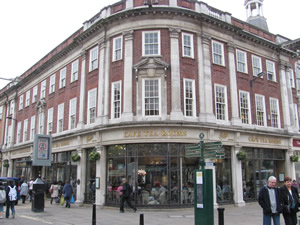
|